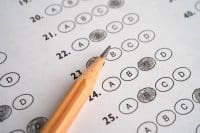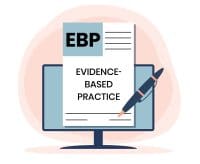References are the lifeblood of an article. They support your message and enable readers to seek out additional information. But authors too often fail to give the reference list the same care and attention they give the main article. It’s not unusual to find errors, such as misspelling of author names, typos, and wrong page numbers. These errors:
- may make it more difficult for the reader to find the article
- reflect a lack of respect for the original source (think how you would feel if you saw your name misspelled in print)
- may affect how editors and peer reviewers perceive your work. For instance, peer reviewers who find multiple errors in the reference list may question the accuracy of your overall work.
Follow three simple tips to ensure your reference list is both useful and accurate.
- Keep track of all the elements. As you do your research, ensure you have the basic information you’ll need for to create each citation for your reference list: all author names, article title, journal name, publication date, volume, issue number, and page numbers. You also should note the link (URL) for online sources and DOI (Digital Object Identifier) number, if available.
The DOI, which is assigned to each article on publication, allows readers to find the article online by using that number instead of a traditional URL, which can change over time. (Note: Not all journals use a DOI.)
- Use the correct reference style. The two main reference styles used by journals are the American Psychological Association (APA) and the American Medical Association (AMA). The styles are outlined in their respective books (see reference list below). One of the main differences is how references are cited in the text: APA uses the author’s last name and year of publication, but AMA uses a superscript number that corresponds to a list at the end.
In citations in the reference list, APA requires more detail than AMA (and more periods and commas!). Below is the same citation in each style so you can see the differences.
AMA: Meyers LC, Heard L, Mort E. Lessons learned from medical malpractice claims involving critical care nurses. Am J Crit Care. 2020;29(3):174-181. doi: 10.4037/ajcc2020341
APA: Meyers, L.C., Heard, L., & Mort, E. (2020). Lessons learned from medical malpractice claims involving critical care nurses. American Journal of Critical Care, 29(3), 174-181. https://doi.org/10.4037/ajcc2020341
It’s crucial to use the correct style, which you’ll find in the author guidelines; otherwise, the journal may return your manuscript for you to correct before sending for peer review, which adds to the time it takes for you to learn if your article will be accepted for publication. In addition, some journals may use slight variations of the APA or AMA style, so note check for any additional comments.
- Tap into technology. Consider using a reference management program such as Endnote, PaperPile, or Mendeley (free). You can store all your references in the program, which allows you to automatically change format, for example, from AMA to APA and back again, and insert citations into a Word document. (You still need to verify the correct format.) Many journals’ websites also have an “export citation” feature, which allows you to export the citation directly into the reference management program you’re using, saving time.
Even if you don’t use one of these programs, you can use the “cite” button that’s available in PubMed, which allows you to download the citation in the desired style. Although the citation isn’t always formatted correctly, it does give you all the information you need.
It’s the author’s responsibility to ensure that the reference list is correct and in the proper format. By ensuring you have complete, accurate data and using the correct format, you can more easily fulfill this responsibility and provide readers with valuable resources.
References
American Psychological Association. Publication Manual of the American Psychological Association. 7th ed.; 2020.
JAMA Network Editors. AMA Manual of Style: A Guide for Authors and Editors. 11th ed. Oxford University Press; 2020.
Nicoll LH. Finding and documenting sources. In: Saver C. Anatomy of Writing for Publication for Nurses, 3rd ed. Indianapolis: Sigma; 2017. 67-92.



















